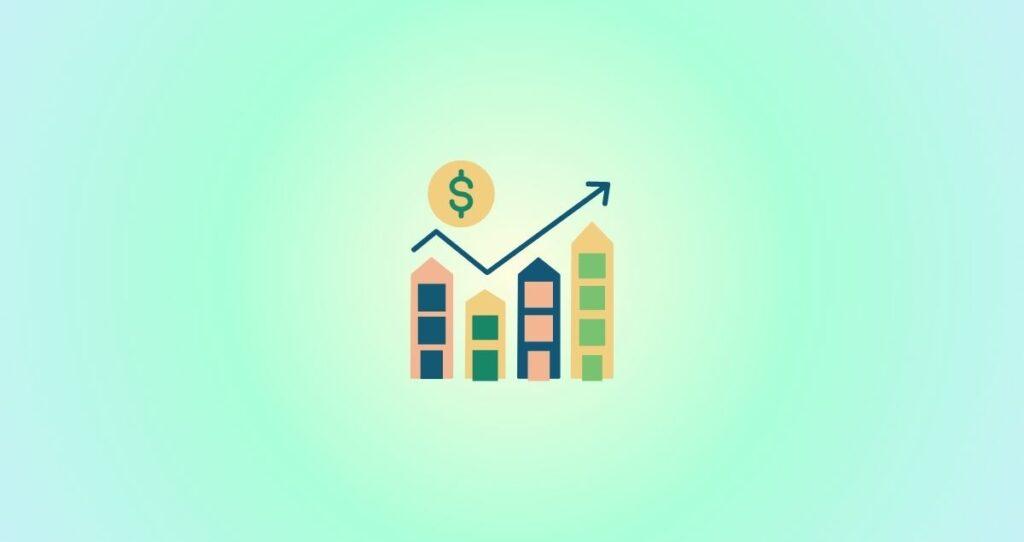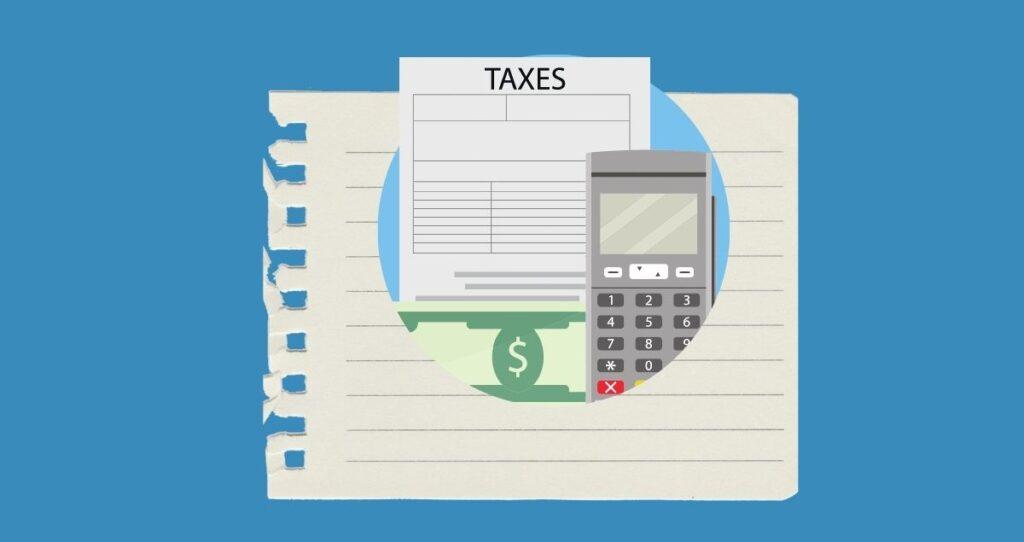The right investment strategy requires forming a portfolio and allocating your assets based on your financial goals and risk tolerance. Typically, the type of portfolio you create depends on your risk tolerance, expected return on investment, time horizon, and financial goals. One of the widely used types of portfolios is a growth portfolio where equities take a big chunk of your portfolio. Generally, a growth portfolio has 80% equities and 20% fixed-income assets. The more equity you hold in your portfolio, the more risk your funds are exposed to but with potential for high returns.
Fixed income refers to assets that pay fixed interest and dividends such as dividend stocks, bonds, and deposit accounts. In contrast, equities refer to individual stocks and stock funds such as mutual funds and exchange-traded funds(ETFs). Equities are more volatile and riskier, and therefore, do not guarantee the safety of your principal or an ROI.
While there are more types of portfolios such as income portfolio, conservative portfolio, and aggressive portfolio, this article will focus on growth portfolio.
Here is everything you need to know about a growth portfolio.
What is a growth portfolio?
A growth portfolio is a portfolio that is primarily made of stocks with capital appreciation being its main objective. If you want to form a growth portfolio, focus on buying stocks of companies that reinvest their earnings back into the company for research and development, expansion, and acquisitions.
Because a large chunk of your portfolio is growth stocks, a growth portfolio comes with high risks but also offers high above-average returns. For this reason, a growth portfolio is good for you if you are investing for the long term. Based on the market capitalization, growth stocks are divided into three major categories which are small-cap($250 million to $2 billion), mid-cap($2 billion to $10 billion), and large-cap(over $10 billion).
How does a growth portfolio work?
A growth portfolio is a type of portfolio where the majority of your holdings are stocks and stock-based funds. Not every stock qualifies for this portfolio. To be a growth portfolio, you need to buy growth stocks that have above-average growth where earnings and revenues are reinvested for acquisition, growth, research, and expansion. The key point here is a high-risk, high-reward strategy.
If you buy growth funds and index funds, buy funds that primarily target above-average revenues. These funds usually have a high price-to-earnings(P/E) ratio.
A growth portfolio is right for you if you want to benefit from stock growth and have no intention of collecting dividends. Growth stocks are usually held for 5 to 10 years for maximum return on investment. Holding these stocks longer helps you offset short-term volatility.
What is a growth fund?
A growth fund is a mutual fund or exchange-traded fund(ETF) that is made of growth stocks. Growth stocks are those that are expected to have a higher growth rate than regular stocks. Growth stocks usually come from sectors like technology, biotechnology, and energy.
Just like individual stocks, growth funds also come in small-cap, mid-cap, and large-cap. Typically, small-cap funds experience higher volatility than mid and large-cap funds. By investing in growth funds, your portfolio experiences the highest volatility and risk but also comes with the potential for higher earnings.
Growth portfolio vs. aggressive portfolio
The typical growth portfolio and aggressive portfolio are both forms of growth portfolios as they both focus on maximizing return on investment by acquiring above-average growth assets. The difference between the two is how much volatility an investor is expected to experience.
For a growth portfolio, an investor aims for 80% equities and 20% fixed-income assets. The 20% in fixed-income assets produces some form of short-term income such as dividends and interest payments. Fixed income also helps prevent high volatility.
For an aggressive portfolio, you hold 100% equities with no fixed-income assets. This means your portfolio experiences the highest volatility and is more prone to high risk. At the same time, your return on investment will also be higher if your assets grow higher due to high volatility.
You might also like: 15 Ways to Become Rich without Investing in Real Estate
Pros of a growth portfolio
The biggest advantage of a growth portfolio is the potential for higher returns, a chance to invest in high-growth industries and companies, and diversification. Since growth portfolios are considered aggressive, you usually get higher returns compared to other forms of portfolios such as income portfolios, conservative portfolios, or moderate portfolios.
Cons of the growth portfolio
While a growth portfolio gives you an above-average return on investments, it also comes with disadvantages. Unexperienced investors usually find it difficult to manage a growth portfolio due to higher volatility and increased risks. The fear of losing their nest egg gets the best of them.
Here are the cons of a growth portfolio you should know.
- High volatility. Unlike an income and moderate portfolio where a large percentage of your acquisition is fixed-income, growth portfolios have more equities than fixed-income assets. By investing in individual stocks and growth funds, your portfolio is prone to higher volatility than other forms of portfolio besides an aggressive one.
- Long-term investing horizon. When you buy growth stocks and funds, it takes many years to realize a potential return on investment. Usually, a good time horizon for growth funds is 5 to 10 years.
- Lack of meaningful dividends and interest payout. Growth stocks usually reinvest their earnings back into the company for research, product development, acquisition, and expansion. Since these stocks will make up to 80% or more of your portfolio, you will have a low to no dividend and a low-interest payout due to owning a small percentage of fixed-income assets.
You might also like: How to make money with CDs: Make $200/mo on CDs
How do I start a growth portfolio?
To start a growth portfolio, you need to know your risk tolerance, investment horizon, and financial goals.
Here are a few steps to form a growth portfolio.
You might also like:
Identify your financial goals
To minimize your risk, it is best to pick an investment strategy that aligns with your goals. Every investment portfolio offers different benefits. For example, if you want to earn income from your investment, creating an income portfolio will be a great idea. But, if you want long-term growth, making a growth portfolio will be a great way to invest your money.
Before you start a growth portfolio, know your financial goals. Why do you want to invest and what are you expecting from your investments?
Understand your risk tolerance
Investing money can sometimes be difficult especially if you don’t understand your risk tolerance. Risk tolerance refers to how much risk you are comfortably willing to take for an expected return. The higher the risk tolerance, the higher the return on investment(ROI).
Markets experience volatility is inevitable. Very often, people panic and sell at a huge loss because they cannot take the pain anymore. If you are one of these people, your risk tolerance is low. This means you should focus on acquiring more fixed-income assets than equities. This is because growth assets such as stocks and stock-based funds come with higher volatility than fixed-income assets such as bonds and money management accounts.
Identify your time horizon
The time horizon represents the time you are going to hold your investment. Typically, a growth portfolio requires a 5 to 10-year holding time. Before you create this portfolio, you need to know how long you are investing the money for and when you will need the money.
For example, if you are saving for retirement, you won’t need the money until 30+ years depending on your current age and expected retirement date. But, if you plan to use the money for a down payment on a home purchase, creating a growth portfolio won’t do you any good. This is because you might need to liquidate your investment before they have reached the full potential to finance the house. Depending on market conditions, you might end up selling at a huge loss before the market recovers.
Again, your time horizon is directly reflected by your goals. Your financial goals determine your time horizon and the latter determines the type of portfolio you create.
You might also like: How to Invest When You Are Poor with 11 Simple Strategies
Consider other forms of portfolios
Besides a growth portfolio, there are other forms of portfolio you can create. If you realize a growth portfolio is not right for you, create a different portfolio that aligns closely with your goals.
For example, if you want to earn income from your investments to help pay your bills, creating an income portfolio will be a great investment strategy. This is because a fixed-income portfolio is made of 80% fixed-income assets and 20% equities. Fixed income assets include bonds, dividend stocks, deposit accounts (HYSA, MMA, and CDs), T-bills, etc).
All these assets pay you interest or dividends you can use to help pay your bills. Should you need the money soon in like 1 to 2 years, you can purchase short-term CDs and bonds that mature in that time horizon.
Other forms of portfolios you can consider include a conservative portfolio which is made of 60% fixed income portfolio and 40% equities, and a moderate portfolio which is made of 60% equities and 40% fixed income assets.
Diversity your portfolio
Diversification is essential to safeguard your portfolio from high volatility and market risk. The type of investment you hold in your portfolio usually determines the kind of risk you are exposed to. If you want to create a growth portfolio, at least 80% of your assets will be equities. For this reason, your portfolio will be exposed to higher volatility compared to an income portfolio where only 20% is equity.
To minimize the risk of losing money, diversify your investments by acquiring a great number of diverse asset classes. For example, instead of purchasing only stocks to chase higher long-term growth, optimize your portfolio by purchasing some stocks and stock mutual funds. Additionally, do not hold a lot of small-cap stocks as they are more prone to volatility compared to mid- and large-cap stocks.
Aiming for stocks and stock-mutual funds in unrelated sectors adds some form of security to your portfolio. For example, instead of buying only healthcare stocks and stock funds, you can have a good mix of healthcare funds, technology funds, real estate, commodities, etc. You can also purchase stock funds that are already well-diversified to minimize your risk.
Related: How to invest without losing money: Investing guide for newbies
How much do growth portfolios return?
The return on investment from growth portfolios is slightly different from Income portfolios or conservative ones. For an income portfolio, you will have more income-generating assets such as bond and money management accounts and dividend stocks. With such investment, your return on investment comes in the form of interest and dividends.
With a growth portfolio, you benefit from the growth of the asset classes you are holding. The growth rates of the growth portfolio differ based on the investments you have. Typically, growth portfolios return between 10% to 20% annually.
A typical growth portfolio has 80% equities and 20% income-generating assets. Equity here refers to stocks and stock-based funds.
More investing tips
What to invest in during a recession to make money?
53 Personal Finance Terms You Need to Know
How to prepare for a recession: 13 tips to survive a recession








